If you buy through our links, we may earn an affiliate commission. This supports our mission to get more people active and outside.Learn about Outside Online's affiliate link policy
The Busy Triathlete's Guide to Meal Prepping
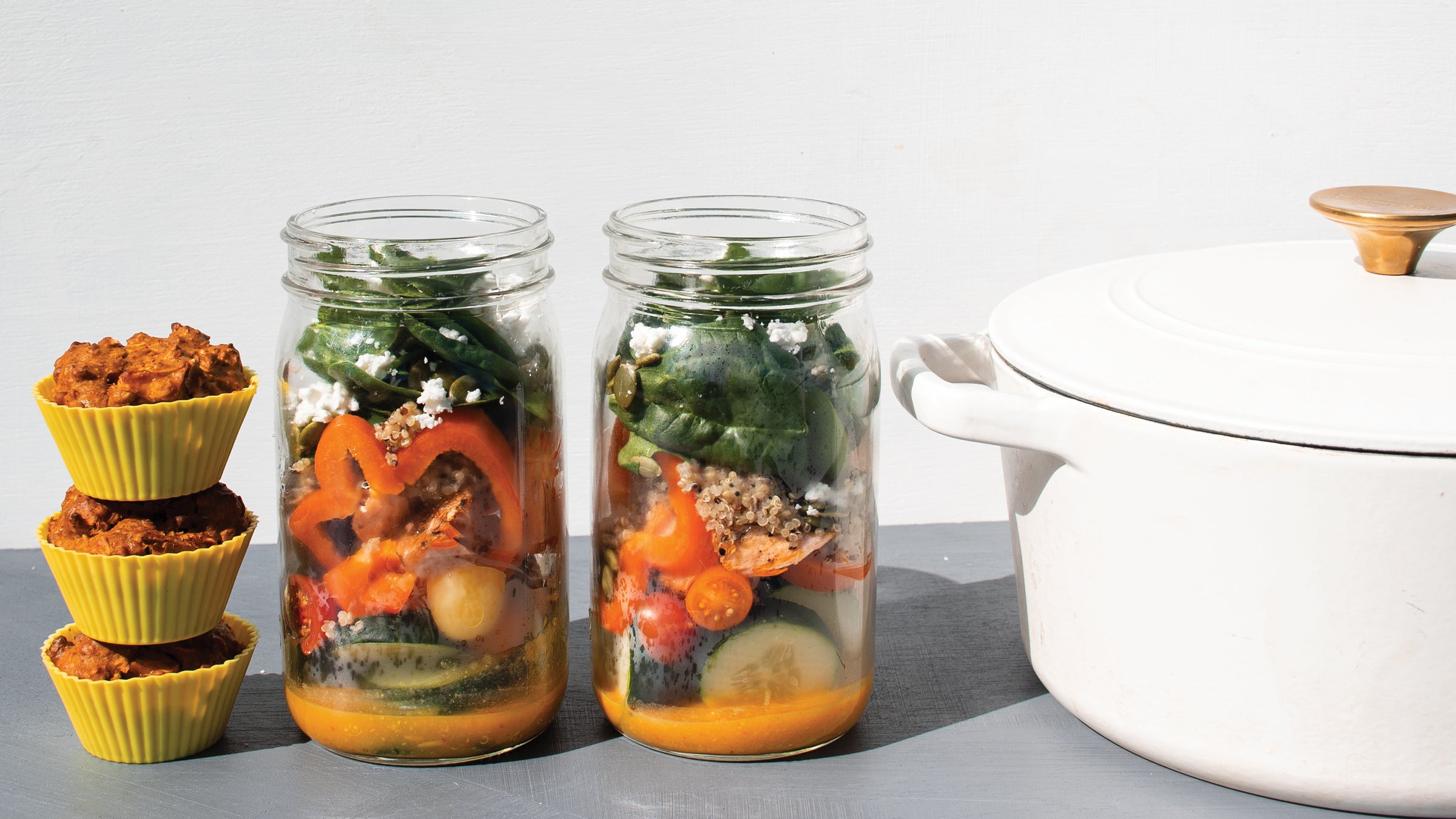
(Photo: Hannah DeWitt)
The cost of eating out is rising, just like everything else, based on the Bureau of Labor Statistics Consumer Price Index. So whether you’re looking to save money by reducing how much you eat out, or you want greater control of your macros for triathlon training, meal planning is for you.
The idea of spending a chunk of precious free time portioning out a week’s worth of meals and snacks can seem intimidating (and unappealing) to the uninitiated athlete, but it doesn’t have to be that intense and the payoffs are numerous. Like with triathlon training, you just have to put in the work up front to reap the rewards down the road.
“Busy athletes usually have more than just their sport to think about – family, work, and school also compete for their cooking time,” said sports dietitian Marisa Michael, owner of Real Nutrition in Portland. “Meal prepping helps streamline the meal process by taking away the daily guesswork and decision-making around mealtimes.” She adds that if the meal is already decided and prepared, it helps reduce the mental load of fueling your body, which can be especially tough when you’re tired. Decision fatigue is a real thing.
Putting together some of your meals ahead of time makes it easier to eat healthier, too. We tend to make better choices for our future selves than we do for our current selves. Michael says you’ll be motivated to select wiser choices – say, more veggies and healthier meats – when you map out your menu in advance and can turn around nutritious dishes in just minutes, instead of getting stressed in the moment and opting for something unhealthy and fast. One study in the American Journal of Preventive Medicine the more time an individual devoted to meal preparation, the less tendency they had to eat out, and therefore the more nutritious their diet was. And meal planning is associated with increased food variety that, in turn, increases the likelihood of meeting nutrient needs and makes healthy eating a lot more inspiring.
And then there are the cost savings. “If you prep your own meals, you’ll save a lot of money by not buying more expensive prepared meals or eating out as often,” Michael said. When you have nothing ready for lunch, you may choose to head to the nearest salad bar and spend way too much on a pile of vegetables and sketchy dressing.
While meal prep requires paying more money on groceries upfront, over the long run, you’ll stretch out those ingredients, making it a budget-friendly decision. This will leave you with more cash in your pocket that you can use elsewhere, like race entry fees and the infamous n+1 bike. The only downside is that, in order to prepare for the upcoming week, your Sunday afternoons may no longer be such a lazy affair.
Meal prepping may sound daunting, but it’s actually quite simple with a little know-how. We’ve outlined the basics and provided some tips to make it a bit less overwhelming.
Meal planning tips
- Mark your calendar. Harried lives make it easy for meal prepping to be put on the back burner. It’s worth blocking out a set time each week (and, no, it need not be on Sunday) where your only task is to get your ingredients ready and prepare some meals.
- Do the math. Calculate how many breakfast, lunch, and dinner meals you want to prepare in advance. Knowing which repasts you just want to pull from the fridge on certain days lets you zero in on what you need to make during your meal prepping sessions. That way, you can plan more efficiently. And do you have to map out every single thing you’re going to eat for the entire week? Nope. “Just choose one meal to start with. Then once you get a handle on that, start adding in more,” Michael said.
- Keep it simple. If you’re new to cooking, Michael recommends staying away from recipes that require too many ingredients or use complicated methods. She adds that there is no shame in using convenience foods like canned beans, jarred sauces, frozen veggies, canned fish, and rotisserie chicken to help make your new life as a home chef easy.
- Think small. To maximize the benefits and set the tone for smooth eating all week, be sure to include snacks in your planning sessions. This can include preparing a big batch of hummus and slicing up a bunch of veggies for dippers, assembling trail mix, or packing a container full of homemade energy balls. That way, you won’t have to hit up the vending machine when you’re struck with the munchies.
- Give yourself space. It’s tough to get motivated to cook up a storm if your kitchen is a mess. Before your meal prep session, take a few moments to clean your workspace, clear clutter, and organize your work tools, like cutting boards, knives, and storage containers. And clean as you go, so you aren’t faced with a kitchen that looks like a massacre of pans, cutlery, and chopping boards afterward.
- Learn to multitask. When it’s time to cook, think about ways to maximize your efficiency as much as possible. Meal prepping shouldn’t take more than a couple of hours, if you multitask the right way. For instance, if you’re firing up the oven, roast your vegetables and meats at the same time. And while those are cooking, simmer up a big batch of grains.
- Some assembly required. Meal prepping need not result in finished dishes. Instead, you might want to prepare a few large batches of meat, grains, hard-boiled eggs, beans, vegetables, and dressings that can be used in various ways throughout the week. With those ingredients chopped, simmered, and roasted in advance, throwing together dinner will feel like a breeze. For instance, you could think of a meal as roasted chicken, steamed Brussels sprouts, and quinoa – all items that can be made ahead of time in large amounts and stashed separately in the fridge. Make a big batch of shredded chicken every week and use it for a variety of dishes, like salads or fajitas.
- Spread it out. Remember, you can press the easy button and eat yesterday’s dinner as today’s lunch. “That can be so much easier than trying to make different meals for lunch and dinner every day,” Michael said.
- Deep freeze. Meal prepping doesn’t mean you have to eat the same thing for four days straight. Big batches of items like chili, soup, and casseroles can be enjoyed for a couple of meals and then frozen for meals down the road when you once again have an appetite for them.
- Keep track of everything. Make note of when you prepared perishable items. Cooked meat can safely be stored for three to four days in your fridge. After that, it’s time to freeze.
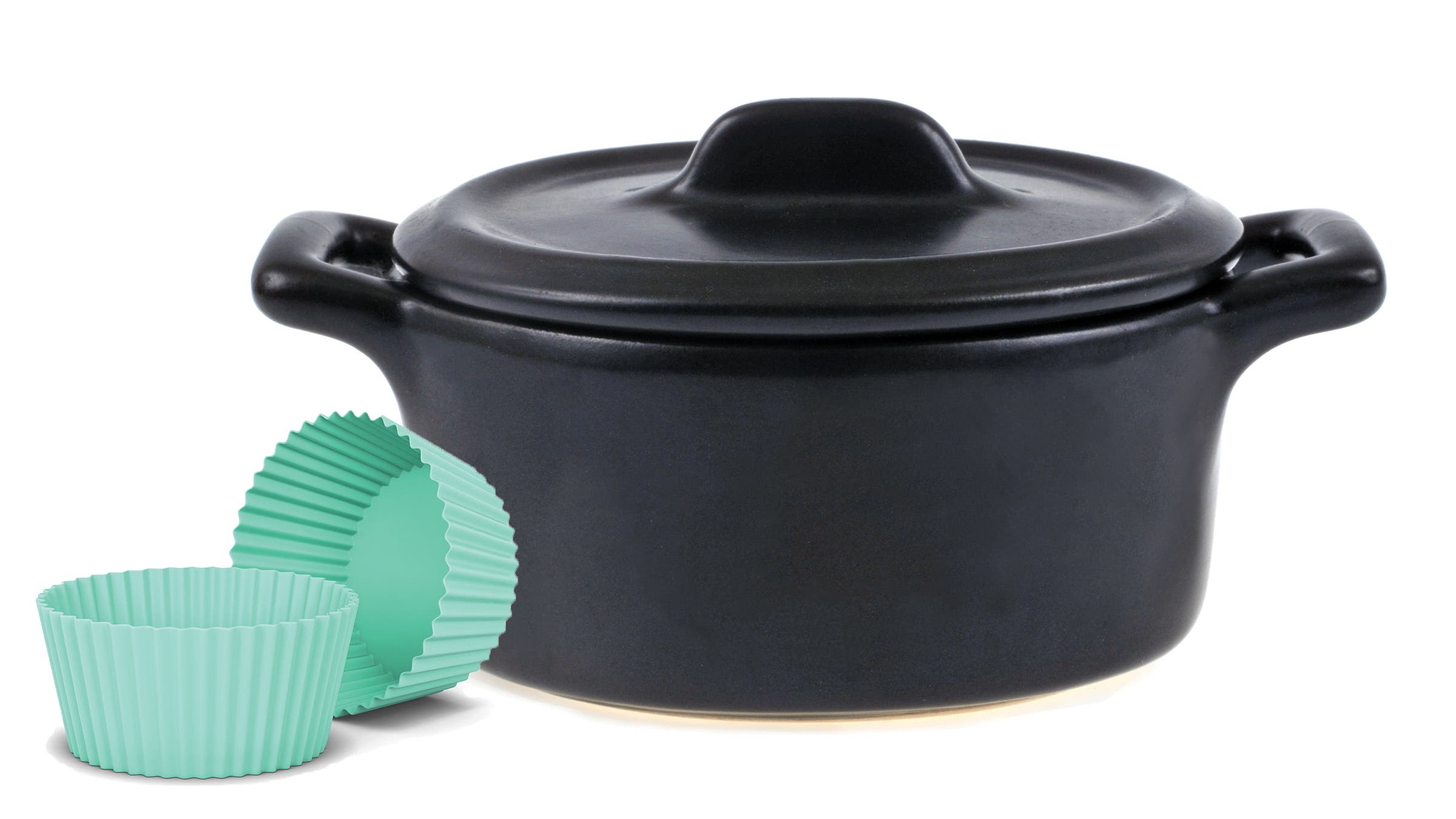
Tools of the trade
Just like your triathlon gear, the right kitchen tools make a world of difference toward a winning performance. Here are your meal prep must-haves.
Wide-mouth glass jars
These are ideal for divvying up complete salad meals in advance. The process is simple: You prep a dressing and then dump it into the bottom of your jars. From here, stack things up by adding your cooked proteins, cooked grains, hearty vegetables such as carrots, then delicate leafy greens, and finally, the flavor boosters like nuts, seeds, or cheese. Seal shut and boom, you’re now set for portable, near-instant meal satisfaction. To fit everything, look for 32-ounce wide-mouth Mason-style jars (we like Ball’s). Smaller jars are great for prepping a few servings of overnight oats.
Dutch oven
Most chilis, curries, and soups are ideal for making in big batches and reaping the nutritional rewards throughout the work week. Plus, these are recipes that typically age well. Pick one where everything is prepared in a single pot, and you won’t be faced with a sink full of grimy dishes after cooking up a storm. The world’s greatest pot, a sturdy Dutch oven, is a heavy cast-iron vessel with a tightly fitting lid that is ideal for batch cooking. It can also go from stovetop to oven. Enameled cast iron can be easier to maintain and clean.
Silicone muffin cups
Virtually non-stick and bendable for easy extraction, silicone muffin cups are great for making everything from frittatas to meatloaves to oatmeal cakes in mini-sized pre-made portions. Pro tip: Use them to freeze extras of stews, meat sauce, and chili into individual serving sizes that defrost quicker.
Stasher bags
The reusable, silicone-based zip-top pouches are ideal for storing sliced vegetables and fruits, cooked grains and legumes, snacks like trail mix, and even individual portions of pre-made one-pot dishes like stews without hogging all the fridge space. Also, use them to freeze extras of big-batch cooking, including prepared whole grains and meat sauce. Get a few different sizes to suit all your needs.
Triathlon meal planning recipes to try
All you need is one afternoon to get breakfast, lunch, and dinner set for the week. Try these three recipes to get you started.
Breakfast Recipe: Pumpkin Apple Oatmeal Cakes
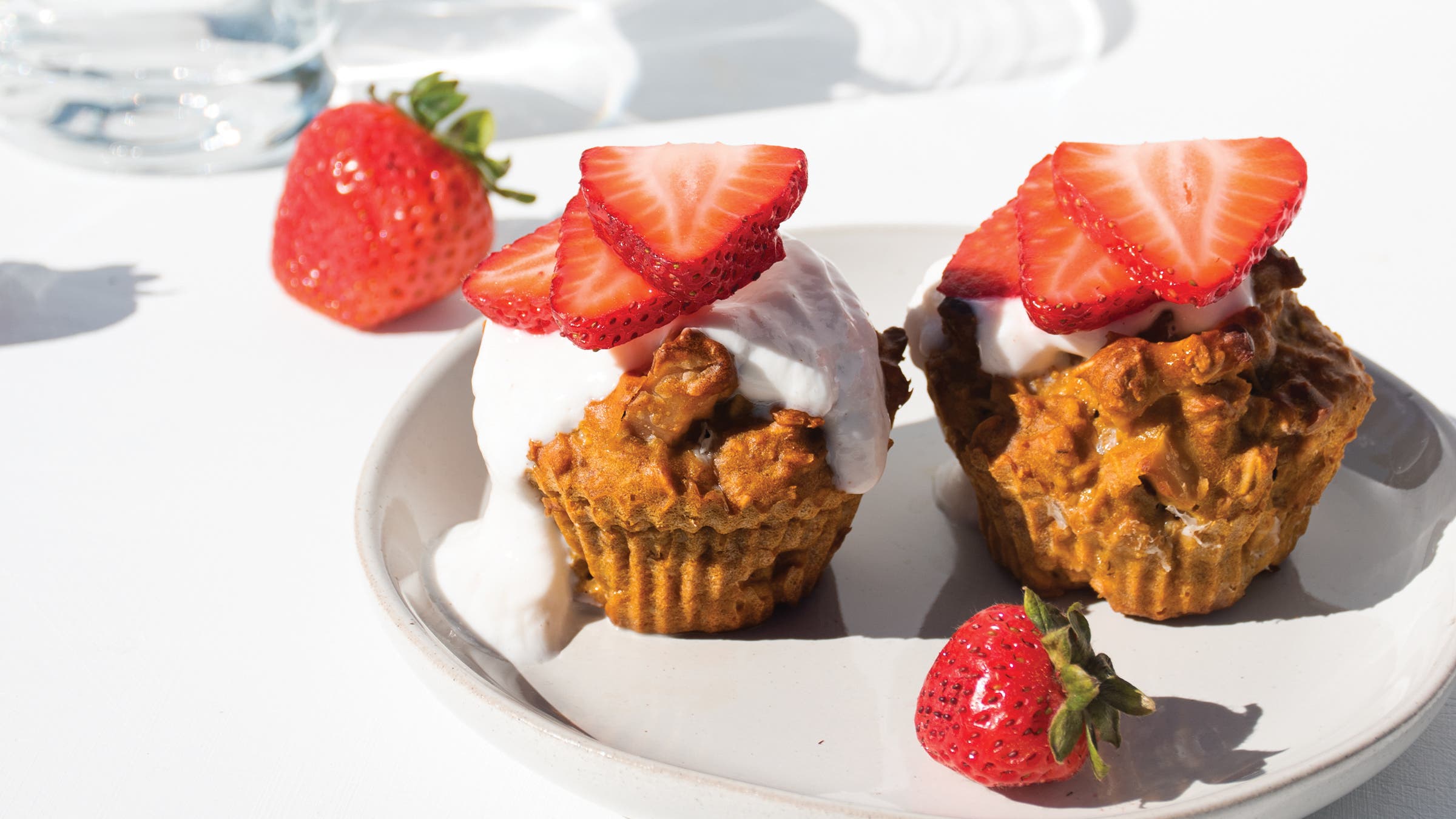
Lunch Recipe: Roasted Salmon Quinoa Salads with Spicy Mango Dressing
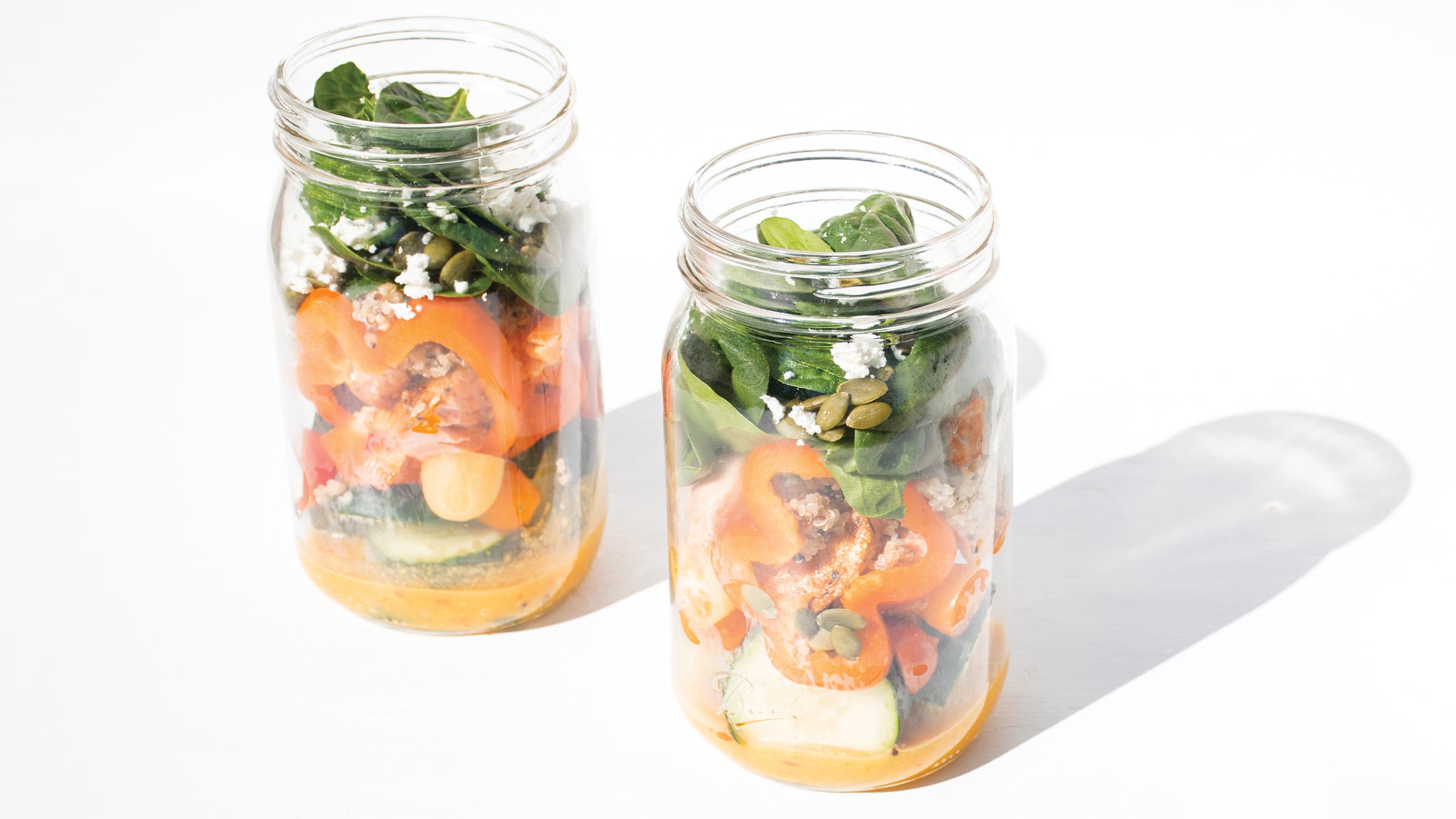
Dinner Recipe: Big-Batch Smoky Tempeh Chili
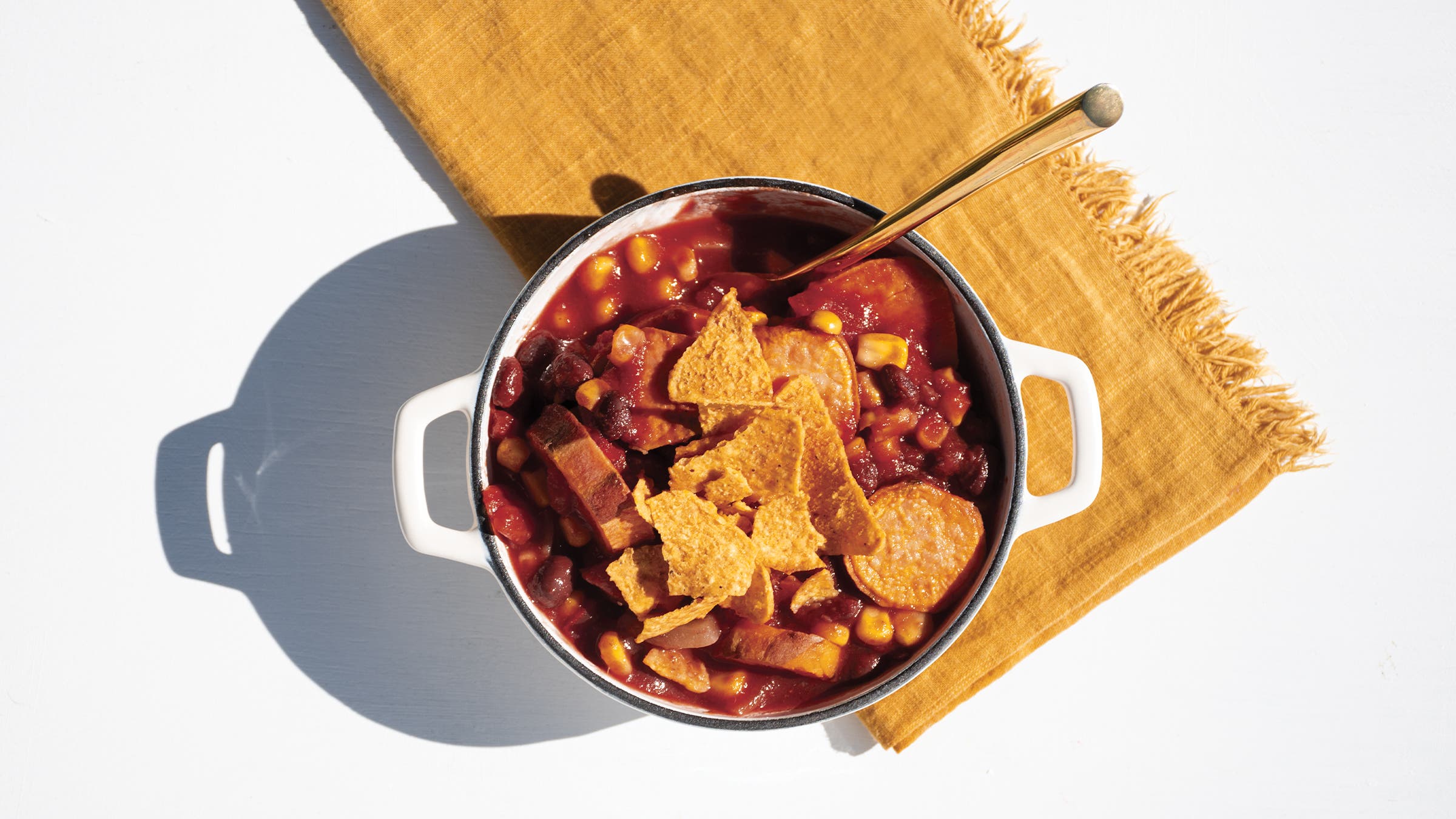
Simple meal planning hack: Make a tower of power
Not quite ready for the full meal-planning enchilada? Simply having ingredients on hand for an easy, throw-together dish can make dinnertime a breeze on your busiest days. You can prep many of these ingredients, or you can even buy already-prepared ingredients (like pre-cooked rice or rotisserie chicken) from the store. Here’s Michael’s winning formula for a no-cooking-required big bowl of nutrition, leveraging the power of make-ahead ingredients.
- Leafy green base (baby spinach, arugula, lettuce)
- Pre-cooked grains (quinoa, farro, brown rice)
- Pre-chopped veggies (carrots, bell pepper, cherry tomatoes, roasted sweet potato)
- Pre-cooked protein (chicken, salmon, steak, beans, lentils)
- Pre-made dressing/sauce
- Finishing touch (cheese, nuts, seeds)